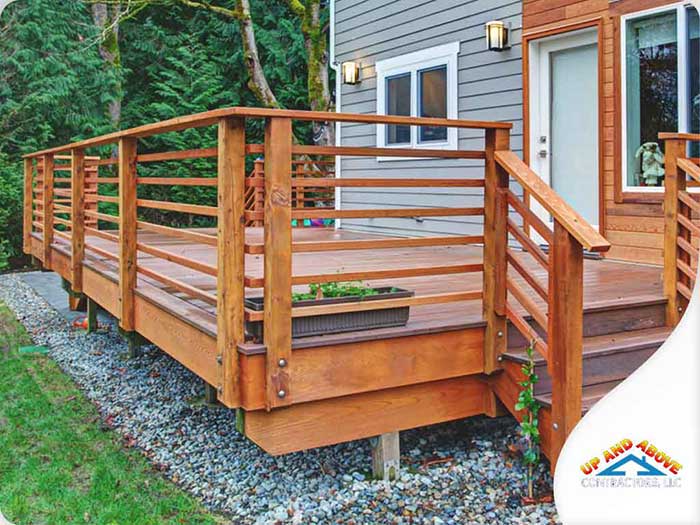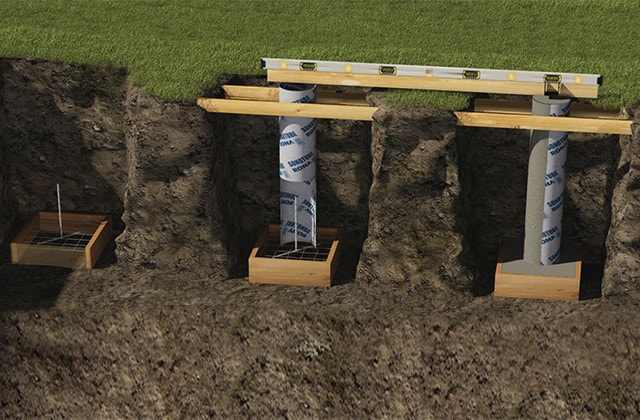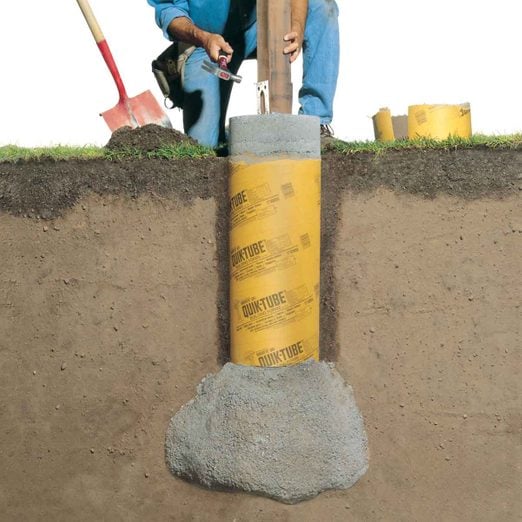Ensure Security and Longevity With Appropriately Installed Deck Grounds
Deck footings might not be one of the most attractive facet of deck building, but they play a crucial duty in guaranteeing security and longevity. Appropriately installed footings supply a solid foundation for your deck, protecting against typical concerns like sagging, changing, and even collapse. Choosing the best kind of ground and properly installing it can be a complex process. In this discussion, we will certainly discover the importance of proper deck footings, aspects to take into consideration during installation, different sorts of footings offered, detailed installment overview, and upkeep tips for ensuring lasting footings. So, if you intend to make sure the security and long life of your deck, maintain reviewing to uncover the vital understandings to attain a structurally sound and durable outside area.

Significance of Correct Deck Footings
Why are appropriately set up deck grounds critical for the security and long life of your deck? Deck grounds are the structure on which the deck relaxes, transferring the load from the deck to the ground.
First of all, appropriately set up deck grounds distribute the weight of the deck uniformly, stopping any kind of irregular settling or sinking. This is especially crucial in locations with unsteady dirt, as it assists to mitigate the danger of the deck collapsing or moving. Furthermore, well-installed footings guarantee that the deck remains level, preventing any architectural damages that can happen when a deck ends up being unequal.
Secondly, properly mounted grounds supply a solid anchor for the deck, protecting against excessive motion and sway. This aids to preserve the structural honesty of the deck, minimizing the risk of injuries or mishaps. It also decreases the deterioration on the deck, allowing it to hold up against the aspects and regular usage for a longer amount of time.
Aspects to Consider for Deck Ground Setup
When mounting deck footings, there are numerous essential factors to think about for proper installment. These factors can substantially affect the security and longevity of your deck. You need to figure out the kind of soil on which the deck will certainly be built. Various dirt types have various load-bearing capacities, so it is vital to conduct a dirt test to make sure the grounds can support the weight of the deck and its owners. Additionally, the area and layout of the deck must be carefully prepared to stay clear of any type of barriers such as trees, utility lines, or below ground pipelines. It is also crucial to think about the local environment and weather problems, as these can impact the toughness of the footings. For example, areas with a high water table might call for additional steps to stop water damages. Finally, the size and material of the footings ought to be selected based upon the size and weight of the deck, along with the neighborhood building ordinance and regulations. By taking into account these factors, you can ensure the proper installation of deck grounds and enjoy a stable and long-lasting deck.
Types of Deck Grounds to Pick From
There are numerous various sorts of deck footings offered for you to select from. Each type has its very own advantages and drawbacks, so it's necessary to consider your particular requirements and the conditions of your deck before making a decision.
One usual sort of deck ground is the concrete footing. This entails excavating holes in the ground and pouring concrete right into them to develop a strong foundation. Concrete footings are sturdy and provide superb security, making them appropriate for decks in areas with tough dirt conditions or high wind loads.
An additional alternative is the helical pier footing, which includes a steel shaft with helical plates that are screwed right into the ground. These grounds are quick to install and can be made use of in numerous soil types, including sandy or clay dirts. They are likewise adjustable, permitting very easy progressing of the deck.
Sonotube footings are an additional prominent option. These footings are produced by placing a cardboard tube in an opening and loading it with concrete. Sonotube footings are reasonably simple to install and give ample security for smaller sized decks or in areas with much less demanding dirt conditions.

When selecting the type of deck footing, it's vital to take into consideration variables such as dirt problems, deck dimension and weight, neighborhood building ordinance, and individual choices. By choosing the ideal ground kind, you can make sure the security and long life of your deck.
Step-by-Step Overview for Setting Up Deck Footings

Determine the place: Start by marking the precise placement of each footing utilizing risks and string (Deck Footings). Consider any type of neighborhood building ordinance or guidelines regarding problem ranges
Dig the holes: Use an article opening digger or an auger to dig the holes for the grounds. The deepness will depend upon the frost line in your location and the kind of soil. Typically, a deepness of a minimum of 36 inches is recommended for stability.
Degree the openings: Ensure that all-time lows of the openings are degree (Deck Footings). This can be achieved by using a level or a straight board throughout the top of the openings
Include gravel: Place a layer of gravel at the end of each opening to boost water drainage and prevent the footing from sinking right into the dirt over time.
Insert the footing types: Place the footing develops into the openings, guaranteeing they are centered and level. Use stakes to protect them in location.
Mix and put concrete: Adhere read this post here to the guidelines on the concrete mix bag to prepare the concrete. Put the concrete into the footing types, filling them totally.
Smooth the surface area: Utilize a trowel to smooth the surface of the concrete and eliminate any type of air pockets. Allow the concrete to cure according to the producer's directions.
Maintenance Tips for Lasting Deck Footings
Appropriate maintenance is vital for guaranteeing the long life and security of deck footings. By consistently checking and maintaining your deck grounds, you can avoid damages and potential security hazards.
Routine cleaning is likewise essential for keeping deck footings. Dirt, particles, and plants can collect around the footings, which can cause moisture buildup and degeneration. Cleansing the footings consistently, using a brush or a stress washing machine, can help stop these concerns and prolong the life-span of your deck.
Along with cleaning, it is necessary to keep the location around the grounds clear of any type of blockages. Prevent piling items against the grounds or allowing plants to grow also close to them. These obstructions can catch moisture and trigger the footings to wear away in time.
Finally, normal resealing of the footings is advised to protect them from wetness and various other ecological variables. Using a waterproof sealant can assist protect against water damage and extend the life expectancy of the footings.
Final Thought
In verdict, proper installation of deck grounds is vital for ensuring article security and longevity of your deck. Aspects such as soil type, tons ability, and neighborhood building codes need to be thought about when selecting the best kind of deck grounds. Complying with a step-by-step guide for setup and regular maintenance will certainly aid to make certain the grounds remain long-lasting and durable.
In this conversation, we will explore the importance of correct deck grounds, elements to consider throughout setup, different kinds of grounds offered, step-by-step installment guide, and maintenance pointers for making sure lasting grounds. Deck footings are the foundation on which the deck relaxes, transferring the lots from the deck to the ground.One typical type of deck ground is the concrete footing. Insert the ground forms: try this website Insert the ground forms right into the holes, guaranteeing they are centered and level.In final thought, appropriate installation of deck grounds is critical for making sure stability and long life of your deck.